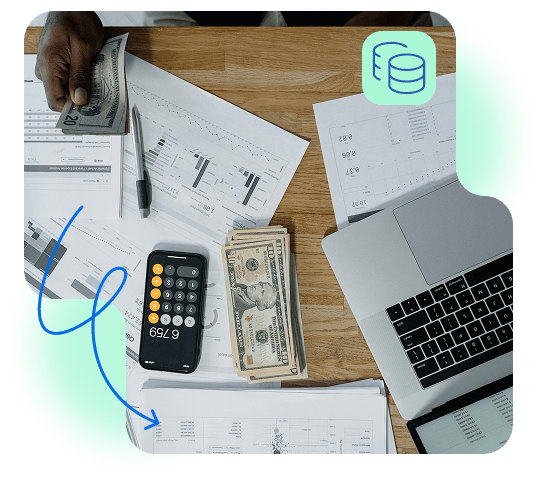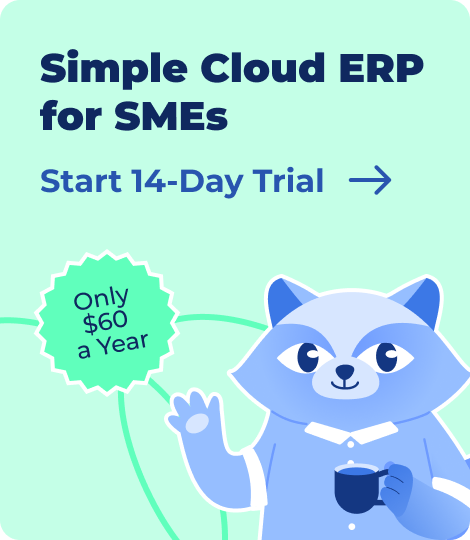Most of your business decisions around pricing can determine its profitability. For students exploring commerce, this builds financial understanding. For business owners and freelancers, it paves a certain foundation for making profitable sales.
Correct pricing can protect your business from losses and instead, build it to drive long-term growth.
Further reading will shed light on exact formulas, practical methods, and real-world examples. These will help you confidently calculate selling prices for products and services.
You’ll also pick up nuances of handling discounts to apply profit margins through a quick problem-solving approach wherein we’ll explain concepts in a way that’s easy to apply.
Time to unpack!
What is the Selling Price?
A simple answer to what is selling price: the final price at which a product or service is sold to a customer. This is the actual amount that a buyer pays after all adjustments for profit, loss, or discounts.
❗ Let’s understand this concept better so that you can differentiate it from other related terms:
- Cost Price (CP): It is the original amount spent to produce or purchase the item.
- Marked Price (MP): This is the listed price before any discounts are applied.
- Selling Price (SP): Suggests a final price a customer pays after applying discounts, profits, or losses.
Key Factors that Define Selling Price
The following aspects contribute to the selling price in a business:
- Direct Impact on Profits: Selling price decisions control how your profit report looks as it can significantly influence your revenue.
- Responsive to Market Demand: Your business needs to adjust the selling prices based on what customers are willing to pay.
- Includes Discounts and Taxes: The final pricing must account for promotional offers and applicable taxes.
- Supports Pricing Strategies: Selling price should reflect decisions made through cost-plus or competitive pricing models.
- Affects Cash Flow Stability: Well-set prices ensure a consistent flow of revenue.
- Strengthens Market Positioning: A competitive selling price makes products more attractive to buyers.
🧮 Set the Right Selling Price with Profit Insight
Pricing isn’t just about adding a markup — it’s about knowing when sales start to cover all your costs.
Kladana’s Free Break-Even Point Calculator helps you:
- Enter fixed and variable costs with your chosen selling price
- Instantly see the break-even revenue and units needed
- Test different markups and margins to check if your price works in real life
Formula of Selling Price
The selling price formula can enable calculating the right price for a product or service while covering costs and achieving targeted profits.
You can use the correct formula to adjust for expected losses or discounts.
Basic Formulas
It is good to know a few standard formulas to fully understand how your profit and loss report would look like when selling products and services.
Some of the major terms to know about:
- SP (Selling Price): Represents the final price charged to the customer.
- CP (Cost Price): Gives you knowledge about the cost incurred to produce or acquire the item.
- Profit%: Suggests the desired profit percentage added to the cost of goods manufactured or services provided.
- Loss%: Highlights the percentage of loss accepted on the sale.
Selling Price (SP) with Profit:
SP = CP + Profit
Selling Price with Loss:
SP = CP − Loss
Example: Selling Price with Profit
A retailer purchases a designer jacket for $2,000 and wants to earn a 25% profit.
SP = (100 + 25) / 100 × 2,000 = $2,500
Example: Selling Price with Loss
A store plans to sell outdated designer stock at a 15% loss.
CP = $1,200
SP = (100 − 15) / 100 × 1,200 = $1,020
How to Find the Selling Price Manually
Manual calculation of selling price is an essential skill for business owners, freelancers, and students. It ensures a clear understanding of how cost, profit margins, discounts, and even losses influence the final price.
Real Life Examples of Manually Finding the Selling Price
Let’s take a look at some practical examples of how you can find the selling price manually.
Case 1: Finding Selling Price with Profit
You calculate the additional amount over the cost price when profit is involved.
💡 Example: A retailer buys a mobile accessory for $500 and wants a 30% profit.
- Step 1: Identify CP = $500 and Profit% = 30%.
- Step 2: Apply the formula:
SP = (100 + 30) / 100 × 500 = $650.
Here, $150 is the profit earned per item. Knowing this will help calculate the number of units that need to be sold to reach profit goals.
Case 2: Finding Selling Price with Loss
As a business, you can accept a loss to clear old stock or avoid larger holding costs.
💡 Example: A store wants to sell out-of-date electronics bought at $3,000 with a 20% loss.
- Step 1: CP = $3,000 and Loss% = 20%.
- Step 2: Apply the formula:
SP = (100 − 20) / 100 × 3,000 = $2,400.
Here, the business consciously accepts a $600 loss per unit to recover working capital.
Case 3: Selling Price After Discount
Discounts attract buyers but directly affect profit. Calculate carefully to maintain profitability.
💡 Example: Marked Price = $1,500; Discount = 10%.
- Step 1: Calculate the discount amount = 10% of 1,500 = $150
- Step 2: SP = 1,500 − 150 = $1,350
If the cost price is higher than $1,350, this sale results in a loss.
Quick Guide: Selling Price Formula Using Profit or Loss Percentage
The selling price formula can help determine how products and services are priced for maximum profitability without losing customer interest.
In the table below, we’ll quickly compare the cost price, selling price, and even profit/loss.
Comparison Table
| Scenario | Cost Price ($) | Selling Price ($) | Profit/Loss ($) | Outcome |
Profit Case |
1,000 |
1,200 |
200 (Profit) |
Profit Earned |
Loss Case |
1,500 |
1,350 |
150 (Loss) |
Loss Incurred |
Break-Even |
2,000 |
2,000 |
0 |
No Gain/Loss |
High Margin Sale |
1,000 |
1,500 |
500 (Profit) |
High Profit |
Discount Sale |
2,500 |
2,200 |
300 (Loss) |
Loss (Clearance) |
How to Calculate Selling Price with Profit
When a specific profit percentage is targeted, businesses calculate the selling price accordingly.
Formula: SP = (100 + Profit%) / 100 × CP
💡 Example:
CP = $1,000; Desired Profit = 25%
SP = (100 + 25) / 100 × 1,000 = $1,250
The selling price must be $1,250 to earn a 25% profit.
How to Calculate Selling Price with Loss
At times, products need to be sold at a loss, usually to clear inventory or recover working capital.
Formula: SP = (100 − Loss%) / 100 × CP
💡 Example:
CP = $1,800; Loss = 10%
SP = (100 − 10) / 100 × 1,800 = $1,620
Here, the seller accepts a $180 loss to liquidate old stock.
How to Handle Discounts While Maintaining Profit
Discounts can attract more customers, but they shouldn’t eat into profits. It’s critical to calculate the right marked price so that even after offering a discount, profits remain intact.
💡 Example:
A retailer wants a 20% profit and plans to offer a 10% discount. The cost price is $2,000.
- Step 1: Calculate the required SP before discount.
SP = (100 + 20) / 100 × 2,000 = $2,400
- Step 2: Adjust the marked price to maintain profit after the discount.
Marked Price = SP / (1 − Discount%) = 2,400 / 0.90 = $2,666.67
The product should be marked at around $2,667 so that after a 10% discount, the final selling price remains $2,400, ensuring a 20% profit.
Real-Life Applications of Selling Price Calculation
Calculating the selling price can help you run business operations smoothly. It is helpful in everyday industry scenarios as it directly impacts profitability and customer satisfaction.
A. Retail Business Pricing
Retail businesses face high competition and fluctuating demand, so incorrectly pricing the products can lead to lost sales or vanishing profits.
Calculating the correct selling price gives you the confidence that every product on the shelf generates profit after covering costs, discounts, and operational expenses.
💡 Example:
A fashion retailer buys sneakers at $400 each and wants a profit margin of 30%.
SP = (100 + 30) / 100 × 400 = $520
During end-of-season sales, if a 10% discount is offered, the marked price should be:
Marked Price = 520 / 0.90 = $578
By marking sneakers at $578, the retailer still makes the planned profit even after offering a discount.
Wholesale and Dealership Margins
Wholesale businesses operate on smaller profit margins but higher sales volumes.
Correctly calculating the selling price lets you gauge that the discounts offered to dealers or bulk buyers don’t lead to hidden losses.
💡 Example:
A wholesaler purchases electronics worth $500,000. Targeting a 15% profit,
SP = (100 + 15) / 100 × 500,000 = $575,000
If offering a 5% discount to encourage bulk orders, the marked price should be:
Marked Price = 5,75,000 / 0.95 = $605,263.
Online Sales and E-Commerce
Online sellers face additional expenses like platform commissions, shipping fees, and payment gateway charges. Ignoring these while setting prices leads to hidden losses.
💡 Example:
A seller lists a product at a cost of $1,000. The platform commission is 10%, and they want a 20% profit.
SP = (100 + 20) / 90 × 1,000 = $1,333
The seller should thus price the product at $1,333 to cover platform fees and still make a 20% profit.
⚡ Want your pricing to reflect true profit?
Kladana helps you factor all costs, set correct margins, and price like a pro
Section G: Practice Problems and Solutions
Practicing calculation scenarios helps reinforce concepts. Solve these step-by-step examples before checking the solutions.
Problem 1: Simple Profit Calculation
A store buys a limited edition watch for $20,000 and wants a 25% profit. What should be the selling price?
✔️ Solution: SP = (100 + 25) / 100 × 20,000 = $25,000
Problem 2: Loss Calculation
A product is bought at $15,000 but sold at a 10% loss. Find the selling price.
✔️ Solution: SP = (100 − 10) / 100 × 15,000 = $13,500
Problem 3: Calculating Marked Price with Discount and Profit
A retailer wants a 15% profit after giving a 10% discount. Cost price is $2,000.
✔️ Solution:
SP = (100 + 15) / 100 × 2,000 = $2,300
Marked Price = 2,300 / 0.90 = $2,555.55
The marked price should be around $2,556.
Problem 4: Real-Life Business Scenario
A wholesaler buys 1,000 smartphones at $800 each. He wants to earn a total profit of $20,000 and plans to offer retailers a 5% discount.
✔️ Solution:
Total CP = $800 × 1000 = $800,000
Total SP needed = $800,000 + $20,000 = $820,000
Marked Price per unit = 820,000 / (0.95 × 1,000) = $8,631.58
FAQs
Let’s address a quick recap-like, frequently asked questions for better clarity.
1. How do you calculate the selling price if profit is given?
You can calculate the selling price by using this formula:
SP = (100 + Profit%) / 100 × Cost Price.
For instance, if the cost price is $1,000 and the desired profit is 20%, the SP becomes $1,200.
2. What if the cost price and loss percentage are given?
Use the formula:
SP = (100 − Loss%) / 100 × Cost Price.
If a product costs $1,500 and a 10% loss is accepted, the selling price is $1,350.
3. Can the selling price be less than the cost price?
Yes, when a business willingly sells at a loss, it is often done to clear old inventory or during sales promotions.
4. What is the difference between the marked and selling price?
The marked price is the original price displayed before any discounts. The selling price is the final amount paid by the customer after applying discounts and adjustments.
5. Is there a shortcut to calculate the selling price quickly?
Yes, multiply the cost price directly by a percentage multiplier.
- For a 25% profit, multiply CP by 1.25
- For a 15% loss, multiply CP by 0.85
6. What if the profit percentage is negative?
A negative profit percentage means you’re calculating a loss. For example, a -10% profit implies the selling price is set below the cost price, resulting in a 10% loss.
7. Why is the selling price calculation important for small businesses?
Small businesses risk underpricing or overpricing their products without accurate selling price calculations.
8. Are online selling price calculators reliable?
They’re helpful for quick results, but knowing how to calculate manually can help spot errors and enhance long-term financial strategies.
Managing inventory, tracking stock movements, and fulfilling orders without errors completes the picture.
Get Kladana to bring it all together with smart inventory and order management tools for growing businesses.


